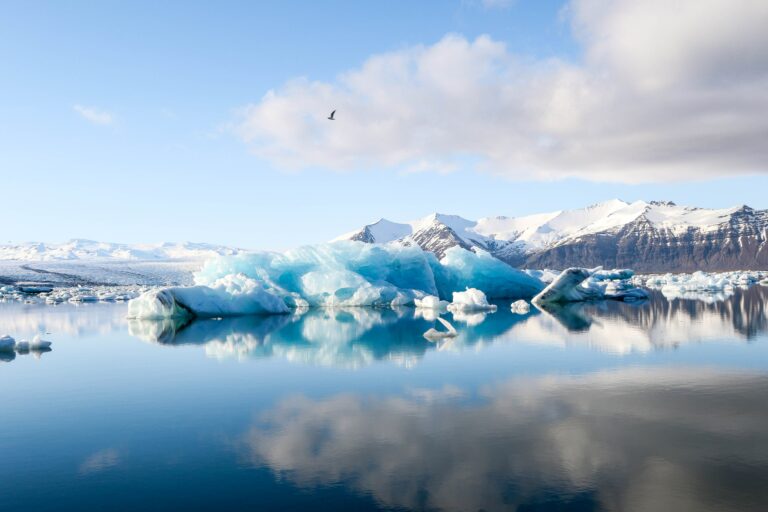Hiking on Glaciers in Iceland; Dangers and Delights.

By Lucky Byfleet
Glaciers in Iceland are one of the top attractions travelers want to see. Whether you want to view them from afar or ice climb in their crevasses. But these beautiful, statuesque structures can be very dangerous to get close to, so learn how to enjoy glaciers safely here.
Iceland’s nickname is ‘The land of Ice and Fire.’ The fire part is our volcanos, if you want to learn about whether you can see an erupting volcano on your visit click here. As for the ice, that is our incredible glaciers that take up about 10% of our land, and almost everyone who visits our shores wants to see them, and we totally understand why!
There are day tours to take you away from Reykjavik, into the countryside to see these icy wonders. One of the most popular places to visit is the glacier lagoon, sometimes you can see the front of the glacier calving here, causing great new icebergs to fall into the lagoon, making big waves so please stay back from the edge of the water, and don’t even think about climbing on the floating icebergs – they flip over as they melt, very quickly and you don’t want to be underneath one!
Once free in the lagoon the icebergs make their way out to sea, with seals hunting all around them! Sometimes the chunks of ice get swept back onto the black sand beach, and melt in the sun, looking like diamonds, hence the name, Diamond Beach! Not all glaciers are clear and blue though, Sólheimajökull is a glacier near the infamous Eyjafjallajökull. When it went off in 2010 the fine ash cloud it created covered Europe, and stopped almost all air travel! If you visit it, we recommend Iceland Discover’s South coast tour, you will see the ash and debris from that, and other eruptions, in layers within the ice, making it a bit stripey!
Seeing a glacier for the first time is mind-blowing, the sheer size of them, them sparkling in the sunlight, the cold air rushing off them. It is totally understandable if you want to walk on one. However the most important thing we can say at this point is;
Never walk on a glacier without a trained guide
and the correct equipment.
Glaciers in Iceland look solid but they are flowing, and throughout the year they move, melt, and grow. Meltwater from the surfaces opening up moulins, roughly circular wells that can reach the bottom of a glacier, which could be hundreds of metres almost straight down. There are also crevasses, which can be covered by a thin layer of snow, and therefore invisible until you walk on them. Experienced guides can read the ice better than most people, but even the most well-trained guides won’t go onto glaciers by themselves, as it is almost impossible to climb out of a crevasse by yourself, even with ice picks and crampons.

You need equipment to go on a glacier in Iceland. Your guide will have a lot more gear than you, including a rope in case you fall, but you will be given some gear too. High heels and Ugg boots don’t cut the mustard. Hard soled, sturdy boots are required, with proper crampons firmly fitted to them. You’ll also need to wear a harness and a helmet. Do not worry though, all this gear will be lent to you by the company you go with. All you need to bring is warm and waterproof clothing in layers, sunglasses, and ideally a bar of chocolate in your pocket!
Another awesome activity you can do on glaciers is Ice Climbing. The buzz you get from completing it is huge but it is exhausting! Even the most hardened rock climbers will find their forearms aching the next day, as with each time you reach up you have to dig in with your ice-climbing axe. If you are scared of heights maybe try rock climbing first, but if you are feeling energetic then definitely give this awesome sport a go!
Please get in touch if you want to learn more about how to view, climb up or walk on a glacier during your time in Iceland.
